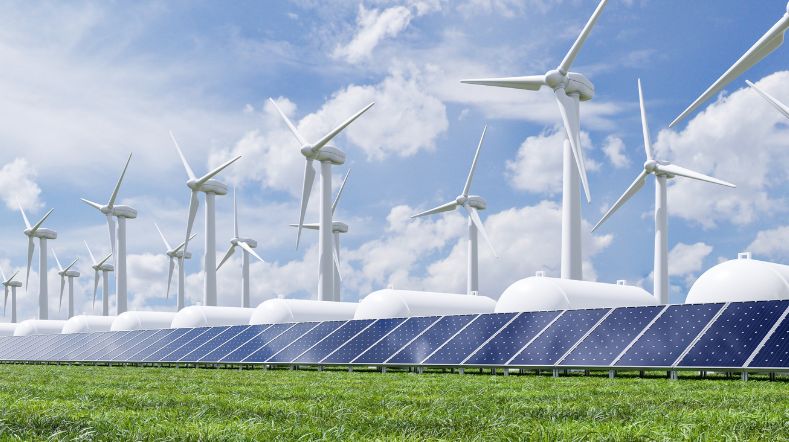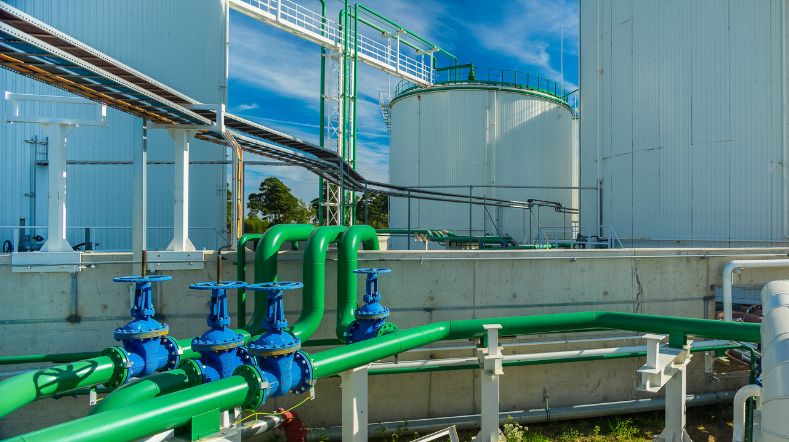
Reusing infrastructure to accelerate the energy transition
All kinds of initiatives are being taken in relation to hydrogen and CO2 with the aim of accelerating the energy transition. The reuse of empty gas fields, infrastructures and platforms is an area on which considerable attention is being focused. This will not only help us achieve our climate targets, but will also save us tens of billions of euros. By working together with other countries bordering the North Sea, we can realise additional benefits too. TNO carries out research for and makes expertise available to businesses and public authorities.
Transport of hydrogen and CO2
Together with Germany, far-reaching plans have been developed with the aim of producing green hydrogen offshore and transporting it to major industrial clusters, such as the Ruhr area. There are also plans to capture CO2 from the industrial sites there, transport it to Rotterdam and then store it in empty gas fields under the North Sea. Many existing pipelines are suitable or can be adapted for this purpose, while some new infrastructure will be required.
Decarbonising German and Dutch industry
In the HY3 study conducted by TNO, the German energy agency Dena and the Jülich Research Centre, which Rob Jetten, the Dutch Minister for Climate and Energy Policy, sent to the Lower House of the Dutch Parliament at the end of June 2022, the researchers conclude that a joint market for green hydrogen developed by the 2 countries could grow to 7 times its current size by 2050. In the areas of industry and haulage in particular, this would make it possible to minimise CO2 emissions over time. The study envisages using an adapted pipeline network, around 5,000 kilometres in length, to transport the hydrogen produced using wind power in the German and Dutch parts of the North Sea to industrial clusters in both countries and to store some of this hydrogen. Dozens of empty salt caverns on land can be adapted to make them suitable for such storage. TNO has demonstrated that this can be done safely.
Storage in European reservoirs
Within the European HyUSPRe project (Hydrogen Underground Storage in Porous Reservoirs) TNO is working together with around 15 knowledge partners and businesses on research examining the possibilities of storing green hydrogen on a large scale in porous reservoirs in Europe. This research is looking into which geological reservoirs are suitable for this purpose, what the risks are and what is technologically and economically feasible. Ecological, social and regulatory aspects are also being considered. The study should result in a roadmap for large-scale hydrogen storage up to 2050 with the aim of contributing to a zero-emission energy system in the EU.
Storing green hydrogen offshore
TNO is carrying out research to determine whether hydrogen can be stored safely offshore in empty gas fields. The advantage here would be that these fields are already connected to existing platforms, wells and pipelines. Decommissioning the installations and infrastructure of depleted fields is an operation with a price tag running into billions of euros. Some of these costs can be avoided by finding a sustainable use for installations that were once employed to extract fossil fuels. Offshore oil and gas platforms can be transformed into green hydrogen production units.
World first
The Netherlands is the first country in the world to demonstrate how this can be done. In the autumn of 2021, roughly 13 kilometres off the coast of The Hague, the PosHYdon project, an initiative of TNO, got under way. On a Neptune Energy platform, which was used for many years to extract gas from the North Sea, experiments are being carried out to produce green hydrogen using wind power. The wind energy is transmitted via a power cable to the platform, where desalinated seawater is split into hydrogen and oxygen using an electrolyser. The hydrogen is then carried to land via an existing pipeline. Fourteen parties are working together on this project, the world’s first demonstration of offshore green hydrogen production from renewable energy.
Cooperation between North Sea countries
Cooperation between public authorities, knowledge institutions and businesses in North Sea countries delivers environmental and financial benefits. The North Sea is an important resource for North-Western Europe that can help make low-carbon energy and an energy-neutral system a reality. Together with the UK-based research organisation Net Zero Technology Centre, TNO has taken the initiative to launch One North Sea, an international collaboration platform for the countries bordering the North Sea. Carbon storage, platform electrification and the development of green hydrogen are key parts of this.
In the paper ‘Cross-border collaboration in the North Sea energy transition’ TNO and the Net Zero Technology Centre outline the opportunities in these areas and how they can be exploited. Here again it is a question of developing smart synergies between existing and new energy systems in the North Sea area.
Within the North Sea Energy programme, TNO and its partners are researching and working together on system integration in the North Sea. This collaborative project between more than 30 parties has been active since 2017. The aim is to acquire knowledge and, by linking energy systems in the North Sea, accelerate the transition to renewable energy sources, make significant cost savings, cut CO2 emissions and make the best possible use of space in the North Sea. TNO helped create the basis for the public-private North Sea Energy programme.
Capture, transport, storage and use of CO2
A great deal of existing infrastructure can also be reused for the transport and storage of CO2. TNO has been involved for over 20 years in national and international programmes focusing on the capture, storage, transport and beneficial use of CO2.
One of these is H-vision, which is centred around capturing CO2 in the Rotterdam port area and storing it in empty gas fields under the North Sea. This initiative dovetails seamlessly with the Porthos project of the Port of Rotterdam Authority, Gasunie and EBN, which is focusing on the transport, storage and beneficial use of CO2.
Gasunie, EBN, Shell and TotalEnergies are working on the follow-up project Aramis, which will involve transporting CO2 from other parts of the country and, in the future, from abroad to empty offshore fields, via the Maasvlakte area of the Port of Rotterdam. This project therefore has a much greater storage capacity than Porthos. For both projects TNO is carrying out research into the safety of the storage.
Get inspired
Energy infrastructure and transport


Tomorrow’s hydrogen production and infrastructure: building towards a secure and robust energy system

CO2 infrastructure and transport


Energy system with systems integration


Expansion of energy infrastructure


